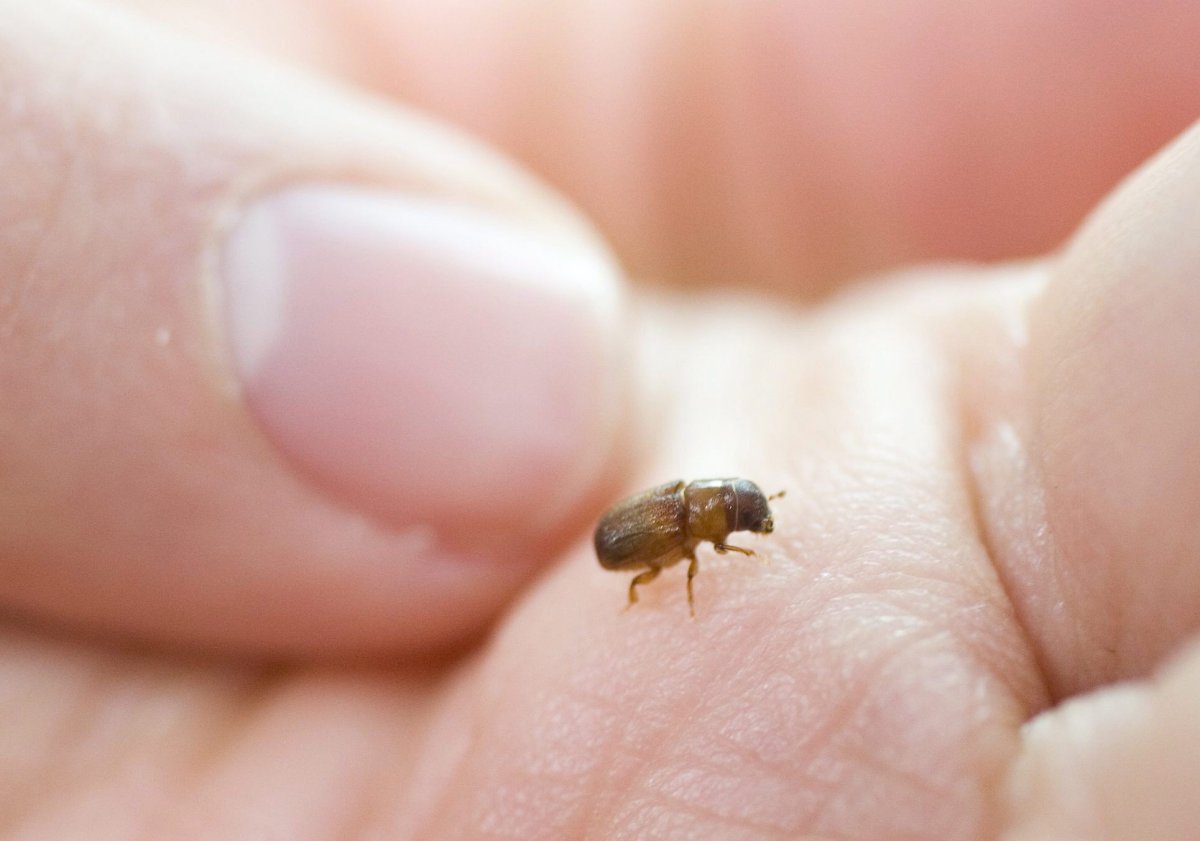EDMONTON – The battle to protect Alberta’s drought-stricken forests isn’t always being fought where the wildfires burn. Throughout much of the province, the warmer and drier than normal conditions have allowed bug infestations that threaten huge amounts of trees.

Many stands of poplar trees stretching from Edmonton to Saskatoon look injured. Large holes in the bark, with sap bleeding out of the wounds are common in especially dry areas.
“This is caused by a wood boring insect called saperda, and we’ve seen a lot more of that following these severe droughts,” explained Ted Hogg, a research scientist with Natural Resources Canada.
Three severe droughts, the most extreme of the century, have occurred in Alberta since 2000.
“When the trees are under drought stress, they can’t defend themselves as much,” Hogg continued, noting that the lack of moisture prevents many poplars from performing their basic physiological functions.
Hogg said up to 30 per cent of poplar trees will die from this infestation in Alberta’s aspen parkland that stretches from central to east-central parts of the province.
“Prior to the drought, the trees were dying at about one per cent per year or so, but the rates have tripled during the severe drought,” Hogg explained.
Saperda are just one of the many tiny, but mighty threats to our dry and weak trees. Increasing average temperatures have helped other bugs as well – and about 25 per cent of Alberta’s forests have been impacted by mountain pine beetles.
“Alberta hasn’t typically been suitable habitat for the mountain pine beetle,” explained Erica Samis, the director of forest health and adaptation section of Alberta Agriculture and Forestry.
“Because we’ve had warmer winters, they’ve actually been able to survive in areas that they historically hadn’t been able to,” said Samis.
Since 2006, the critters have slowly infiltrated the province. A large band from Grande Prairie to Slave Lake is so heavily infested, Simis estimated that 40-70 per cent of the trees will die as a result.
The bugs are so prolific – that fighting them can sometimes be futile.
“The areas north of Grande Prairie, we just let the beetles do their thing and we didn’t apply any active control in those areas,” Simis explained.
Simis also noted that it can take several years of bug attacks to kill a stand of trees – and unlike a wildfire, the regrowth is slow.
“When mountain pine beetle kill a stand, there aren’t the renewal agents like fire,” Samis said. “So the cones would not get heated up and open up the seeds like they would in a wildfire.”
“Regeneration under a mountain pine beetle killed stand can be delayed anywhere from 7 to 11 years,” Samis continued.
The news isn’t all bad for Samis and her team. They did notice a decrease in the amount of mountain pine beetles from 2014 – 2015.
“What we’re really looking forward to now is taking our over wintering populations surveys to see how the beetles did over the winter,” Samis said.
But as climate experts predict continued warm and dry weather – forestry experts say that could mean better over-winter survival rates. Samis expects the over-winter field data for 2016 to arrive by June or July.




Comments